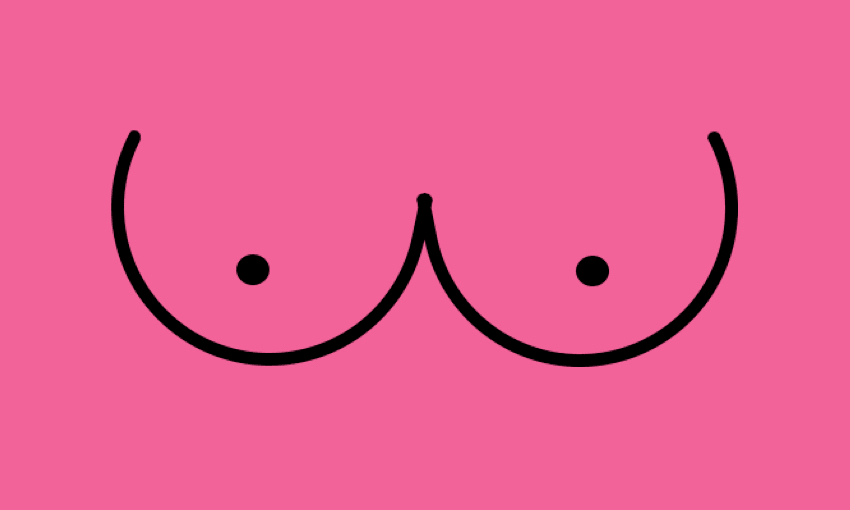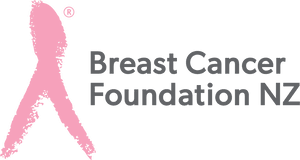Alex Casey gives her boobs some TLC with help from Breast Cancer Foundation NZ.
Here’s a confession: I went 28 years before checking my breasts properly. I mean, I’ve definitely checked that they are there, I’ve done that terrible pencil test to check if I could pull off going braless (I can’t), but I’ve never done the most important check of all. There are 3,300 new cases of breast cancer in New Zealand every year, roughly nine people diagnosed every day. And 5% of those people are under 40 years old.
“I think that because it is more uncommon to have breast cancer when you are younger, it’s just something that people don’t think about,” Kathryn Terry, breast cancer nurse educator for Breast Cancer Foundation NZ, tells me. “People also think that they are a bit bulletproof in their 20s, but that’s the age when we should really start to know what our breasts look like and feel like and implement regular self checks to know your normal.”
Getting to know your normal can be achieved in three steps, Terry tells me: touch, look and check. Or TLC, if you aren’t a scrub. Touch is the first step and can be done either lying down in bed or in the shower. “Put one arm up and use the other arm to touch – you want to make the surface area of the breast as big as possible, and you are using the pads of your fingers to feel for any lumps from underneath your collar bone to all the way around and underneath your armpit.”
Pink Ribbon Breakfast is Breast Cancer Foundation NZ’s biggest fundraising campaign. The money raised helps fund breast cancer education and innovative projects by some of our country’s top researchers, and supports patients and their families as they navigate their breast cancer journeys. Sign up to host here.
But what are you feeling for if your whole boob just feels like a big old lump, I asked, for a friend and definitely not for myself. “It’s about feeling for any irregularities, really. A lot of lumps aren’t cancerous, but you just don’t know until you get it checked out. Some women have lumpier breasts than others, so a good cue is if you found a lump that didn’t go away for a while, especially after your next period.”
If you find any irregularities, and they have stuck around after your period, that’s when you activate the final stage – check. “If there are any problems, book an appointment with your GP who can do further investigations from there,” says Terry. “Most of the time a lump won’t be a cancer and imaging from a mammogram or an ultrasound will show you whether it is benign or something to worry about.”
Anyone under the age of 35 is likely to have an ultrasound instead of a mammogram. “At that age you have naturally denser breasts, so you can expect an ultrasound,” explains Terry. “A mammogram is an x-ray that doesn’t image as well if you have denser breast tissue.” The smallest cancer size found by a mammogram is 2mm, the average found by a mammogram is 14.5mm and the average found by chance is 22mm.
That’s why it’s so important to maintain regular boob meetings with yourself in your 20s and 30s, says Terry. “If you’re actively checking every month, you’ve got much more of a chance of catching something early. We hear from so many people who only notice a lump because their hands happen to brush past something on their boob, or their partner has their arm around them for a cuddle and feels a lump.”
Your GP can also help if you have a strong genetic history of breast cancer in your family. “For women under 45, breast cancer is more likely to be a genetic thing. If you have close relatives who’ve had breast cancer under 50, talk to your GP about getting genetic testing or organising a regular screening programme for you.” Only 5-10% of breast cancers are hereditary.
Beyond regular TLC, maintaining a healthy, active lifestyle and reducing your alcohol intake are all things you can do to reduce your risk of breast cancer. Hormone replacement therapy (HRT) can also increase the risk, so people in the trans community need to regularly check themselves as well. “You are going through such a big change already so it might not cross your mind,” says Terry, “but whether you are male to female or female to male, you are at risk.”
Finally, one of the best things you can do is start to talk about your breasts. Not with strangers across the street, or in your next work meeting, but with your nearest and dearest. “It’s about starting a conversation between friends,” says Terry. “Download the Pre-Check app (it allows you to set up reminders too), show it to friends, make sure you all know what to be aware of and how to take care of yourselves. Because, simply, if it is caught early, it hugely increases your chance of survival.”

